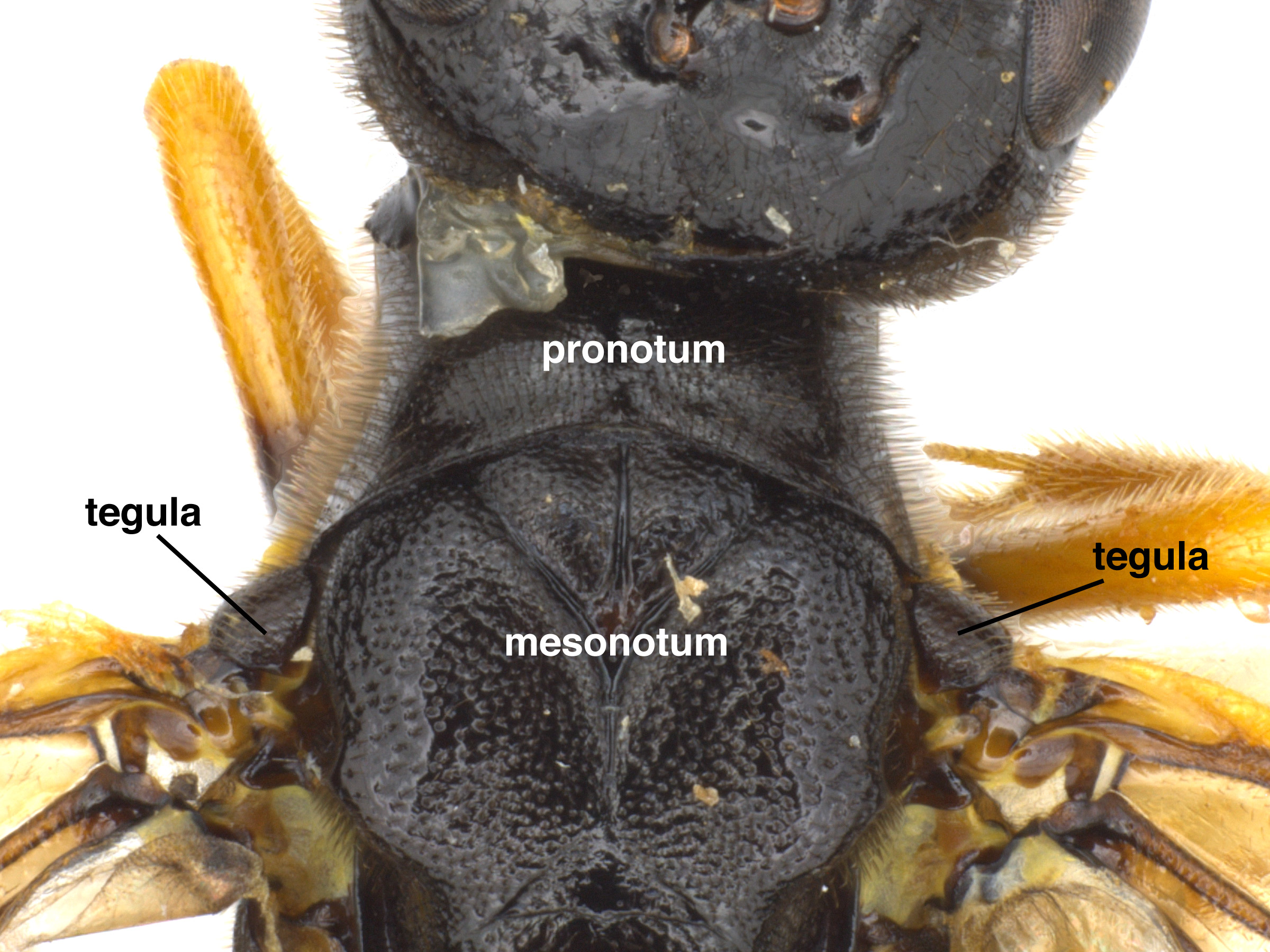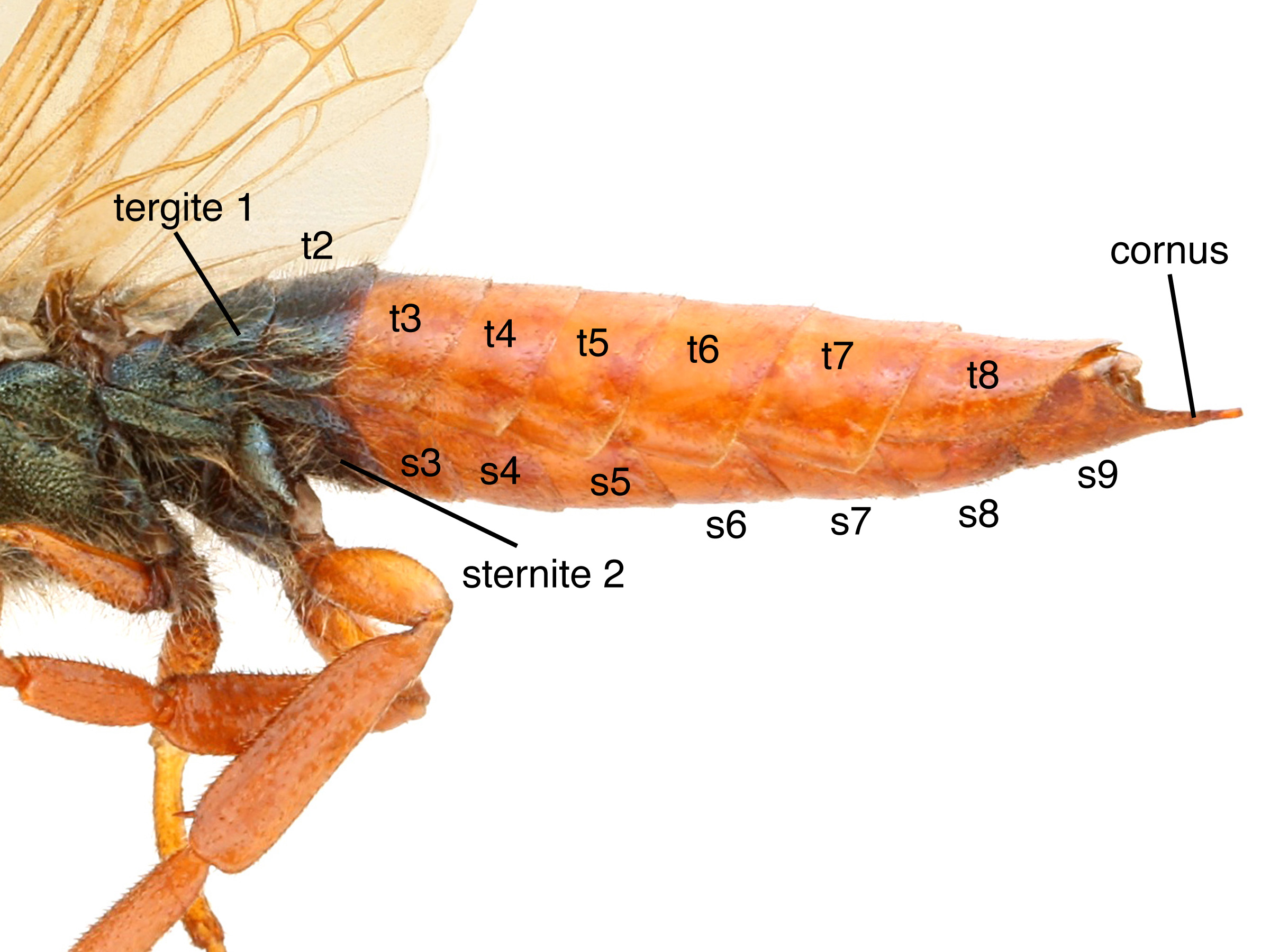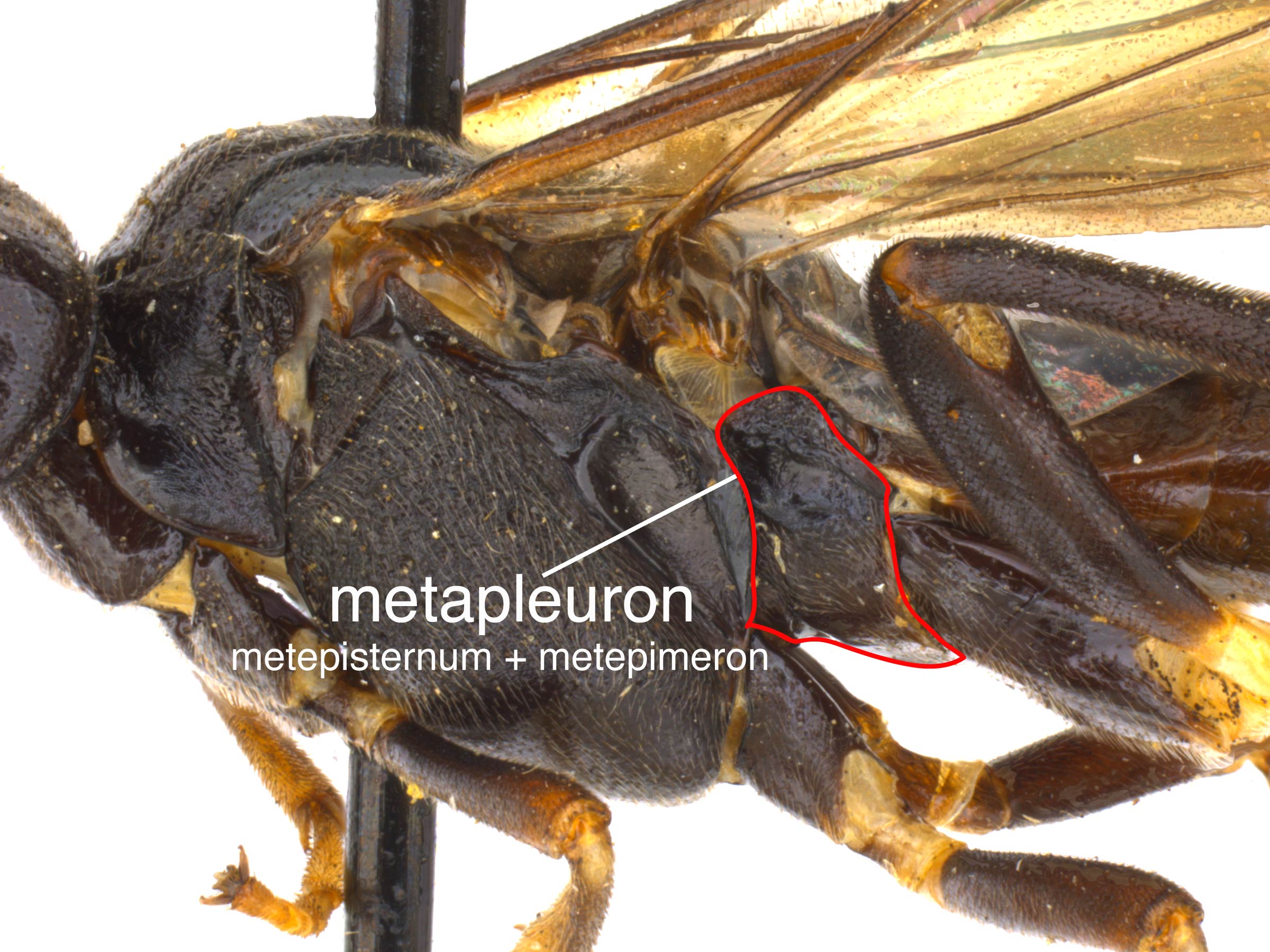Superfamily: Tenthrediniodea
Family: Diprionidae
Family common name: coniferconifer:
a usually evergreen tree characterized by reproductive cones; e.g., pine, fir, spruce, larch, etc.
sawflies
Subfamilies: Diprioninae, Monoctinae
The family Diprionidae, the coniferconifer:
a usually evergreen tree characterized by reproductive cones; e.g., pine, fir, spruce, larch, etc.
sawflies, are common in forested regions of the world. The family include several economic pests, including some introduced species, that can severely damage important forestry tree species (Smith and Middlekauff 1987Smith and Middlekauff 1987:
Smith DR and Middlekauff WW. 1987. Suborder Symphyta. In: Stehr FW ed. Immature Insects. Kendall/Hunt Publishing Company. Vol. 1: 754 pp.). They can be recognized by characteristic stout bodies and comb-like or saw-like antennaeantenna:
the sensory organ emerging from the front of the head, usually between the compound eyes and above the clypeus; includes the flagellum, scape and pedicel
 (Goulet 1992Goulet 1992:
(Goulet 1992Goulet 1992:
Goulet H. 1992. The genera and subgenera of the sawflies of Canada and Alaska: Hymenoptera. Symphyta. The insects and arachnids of Canada. Part 20. Agriculture Canada Publication.).
Diprionidae includes 13 genera and 140 species worldwide. Six genera and 54 species are NearcticNearctic:
describing the region of the Northern Hemisphere that includes North America south through northern Mexico
 in distribution (Taeger et al. 2018Taeger et al. 2018:
in distribution (Taeger et al. 2018Taeger et al. 2018:
Taeger A, Liston AD, Prous M, Groll EK, Gehroldt T, and Blank SM. 2018. ECatSymmdash;Electronic World Catalog of Symphyta (Insecta, Hymenoptera). Program version 5.0 (19 Dec 2018), data version 40 (23 Sep 2018). Senckenberg Deutsches Entomologisches Institut (SDEI), Muuml;ncheberg. https://sdei.de/ecatsym/ Accessed: 28 Jan 2020.).
Augomonoctenus
Diprion
Gilpinia
Monoctenus
Neodiprion
Zadiprion
 medially constricted as seen from above (Goulet 1992Goulet 1992:
medially constricted as seen from above (Goulet 1992Goulet 1992: short ventrally (Goulet 1992Goulet 1992:
short ventrally (Goulet 1992Goulet 1992: spurs present (Goulet 1992Goulet 1992:
spurs present (Goulet 1992Goulet 1992: comb-like (Goulet 1992Goulet 1992:
comb-like (Goulet 1992Goulet 1992: serrate (Goulet 1992Goulet 1992:
serrate (Goulet 1992Goulet 1992: large (Goulet 1992Goulet 1992:
large (Goulet 1992Goulet 1992: 1 not laterally fused to metapleuronmetapleuron:
1 not laterally fused to metapleuronmetapleuron: , sclerites separated (Goulet 1992Goulet 1992:
, sclerites separated (Goulet 1992Goulet 1992:In North America, Diprionidae feed on coniferconifer:
a usually evergreen tree characterized by reproductive cones; e.g., pine, fir, spruce, larch, etc.
trees, generally in the families Pinaceae and Cupressaceae (Smith and Middlekauff 1987Smith and Middlekauff 1987:
Smith DR and Middlekauff WW. 1987. Suborder Symphyta. In: Stehr FW ed. Immature Insects. Kendall/Hunt Publishing Company. Vol. 1: 754 pp.).
Sawflies in this family are similar in form to families in the superfamily Tenthredinoidea: Pergidae, Argidae, and Tenthredinidae. Diprionidae can be distinguished by the number of antennal segments and the distinctive antennal forms (Goulet 1992Goulet 1992:
Goulet H. 1992. The genera and subgenera of the sawflies of Canada and Alaska: Hymenoptera. Symphyta. The insects and arachnids of Canada. Part 20. Agriculture Canada Publication.).
Diprionidae in North America are generally gregariousgregarious:
describing insects in large groups or aggregations
external needle feeders. Several species in the subfamily Diprioninae especially are known for complete defoliation of the host. One species is known to feed inside developing cones of the host (Smith and Middlekauff 1987Smith and Middlekauff 1987:
Smith DR and Middlekauff WW. 1987. Suborder Symphyta. In: Stehr FW ed. Immature Insects. Kendall/Hunt Publishing Company. Vol. 1: 754 pp.).
World: The family most common in boreal regions of North America, Europe, and Asia, with some range expansions south into North Africa, India, and Thailand (Goulet 1992Goulet 1992:
Goulet H. 1992. The genera and subgenera of the sawflies of Canada and Alaska: Hymenoptera. Symphyta. The insects and arachnids of Canada. Part 20. Agriculture Canada Publication.).
North America: Diprionidae occurs throughout the United States and Canada, and south into Central America and the Caribbean Islands (Smith and Middlekauff 1987Smith and Middlekauff 1987:
Smith DR and Middlekauff WW. 1987. Suborder Symphyta. In: Stehr FW ed. Immature Insects. Kendall/Hunt Publishing Company. Vol. 1: 754 pp., Goulet 1992Goulet 1992:
Goulet H. 1992. The genera and subgenera of the sawflies of Canada and Alaska: Hymenoptera. Symphyta. The insects and arachnids of Canada. Part 20. Agriculture Canada Publication.).